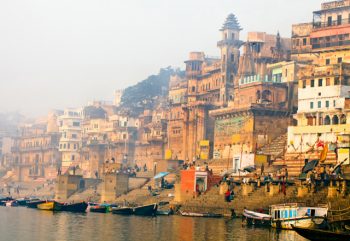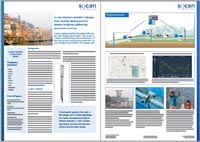s::can’s stations monitor the quality of the water in the Ganges river in India. This results in a better understanding of the contamination of the river by local industry and protects the millions of pilgrims that bathe in the Ganges river.
s::can sensors monitor Ganga river quality during world’s largest religious gathering

Background
Background
The Kumbh Mela festival is believed to be the largest religious gathering on earth with more than 100 million Hindu pilgrims attending to bathe in the holy waters of the Ganges to wash away their sins. In order to protect the health and safety of the large numbers of pilgrims the state government issued various measures to increase the quality of the water in the Ganges, like curbing the discharge of untreated industrial effluents into the river. In order to measure the effect of the government’s actions, the Central Pollution Control Board (CPCB) needed real time water quality monitoring network across the Ganges basin.
s::can’s solution
A total of ten standalone, unmanned remote water monitoring stations were deployed in a network across the Ganges to be able to measure the change of the quality of the water across the basin. Each station consists of a con::cube with four sensors (spectro::lyser, oxi::lyser, condu::lyser and ammo::lyser ). A total of ten parameters were measured at each station. All sensors are mounted submersed in the river and solar panels and batteries at each remote station provide the power supply. The stations are rugged and require minimal manual intervention, which is very important due to extreme environmental conditions in India. These can vary drastically in terms of temperature and humidity, depending on the season. The monitoring network of stations has been designed with a modular architecture to be able to accommodate additional stations in the future. Each station has full capability to validate the measured data and has real-time event detection and contamination alarming. These are some of the powerful features of moni::tool that is installed at all stations. The data is then automatically transferred to a central receiving station located at CPCB central offi ce at New Delhi through a GPRS network in real-time. The Central Receiving Station has provision for data acquisition, -analysis, -display and report generation with parameter value graphs. The water quality monitoring gives the CPCB the insights necessary to take precautionary actions as curbing the discharge of untreated industrial effluent into the river.
